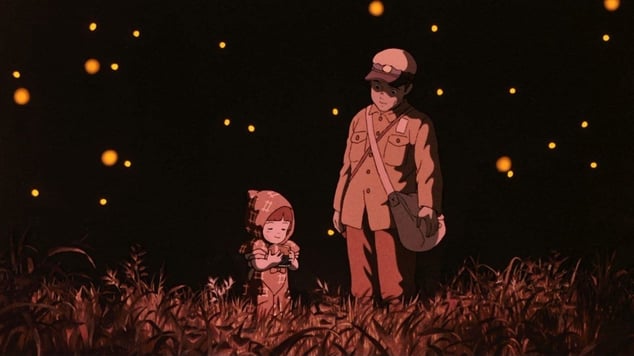A Heartbreaking Masterpiece: Exploring 'Grave of the Fireflies'
Cinemapedia
Grave of the Fireflies (Hotaru no Haka), directed by Isao Takahata and produced by Studio Ghibli, is a cinematic masterpiece that continues to resonate with audiences worldwide. Released in 1988, the film is widely regarded as one of the most poignant and devastating war dramas ever created. Through its stunning visuals, compelling story, haunting soundtrack, and profound moral lessons, Grave of the Fireflies transcends the boundaries of animation to deliver an unforgettable cinematic experience.
A Hauntingly Beautiful Depiction of War
One of the most striking aspects of Grave of the Fireflies is its visual storytelling. Studio Ghibli's attention to detail is evident in every frame, from the lush greenery of the Japanese countryside to the grim and desolate aftermath of World War II bombings.
The contrast between the beauty of nature and the horrors of war is a recurring theme throughout the film. Fireflies, for example, are used as a visual metaphor for fleeting life and innocence, adding an emotional depth to the story. The meticulous animation captures the fragility of life in both its vibrant and tragic forms, leaving a lasting impression on viewers.
A Tragic Tale of Sibling Bond
At its core, Grave of the Fireflies is a story about survival and the unbreakable bond between siblings. Set during the final months of World War II, the film follows Seita and Setsuko, a teenage boy and his younger sister, as they struggle to survive after losing their home and parents to the war.
The narrative is unflinching in its portrayal of the harsh realities of war, depicting hunger, loss, and despair with raw honesty. Despite the bleakness, the film also captures moments of love and tenderness between Seita and Setsuko, showcasing their resilience and deep connection. These moments make the eventual tragedy even more heartbreaking, as viewers witness the devastating consequences of war on innocent lives.
A Subtle Yet Powerful Score
The soundtrack of Grave of the Fireflies, composed by Michio Mamiya, perfectly complements the film’s emotional tone. The music is understated yet evocative, using simple melodies to underscore the characters’ struggles and fleeting moments of joy.
One of the most memorable pieces is the use of traditional Japanese instruments, which adds an authentic and timeless quality to the score. The hauntingly beautiful music enhances the film’s emotional impact, staying with viewers long after the credits roll.
The absence of an overly dramatic score allows the story and visuals to take center stage, making the silence in certain scenes even more poignant. This restraint in musical composition reflects the film’s overall approach to storytelling—subtle yet profoundly moving.
The Human Cost of War
The moral core of Grave of the Fireflies lies in its unflinching exploration of the human cost of war. The film does not glorify or romanticize war; instead, it highlights its devastating effects on ordinary people, particularly children.
Through the experiences of Seita and Setsuko, the film serves as a powerful reminder of the importance of compassion, empathy, and the need to protect the most vulnerable in times of crisis. It critiques societal indifference and the failure of communities to support one another during times of hardship.
The film also conveys the fragility of life and the fleeting nature of happiness, as symbolized by the fireflies. It encourages viewers to reflect on the consequences of war and the responsibility of individuals and nations to prevent such tragedies in the future.
Why 'Grave of the Fireflies' Remains Timeless
Decades after its release, Grave of the Fireflies continues to be celebrated as a masterpiece of animated cinema. Its universal themes of love, loss, and resilience resonate with audiences of all ages and backgrounds.
The film’s ability to evoke profound emotions while delivering a powerful anti-war message makes it a timeless classic. It is a testament to the power of animation as a medium for storytelling, proving that animated films can be just as impactful and meaningful as live-action cinema.
For those who have yet to experience Grave of the Fireflies, it is not just a film—it is a deeply moving exploration of the human spirit in the face of unimaginable adversity. While it may be a challenging watch, it is an essential one, offering lessons in humanity and empathy that remain as relevant today as they were when the film was first released.
In the words of Isao Takahata, Grave of the Fireflies is not just a war story; it is a story about the fragility of life and the enduring strength of love, even in the darkest of times.


